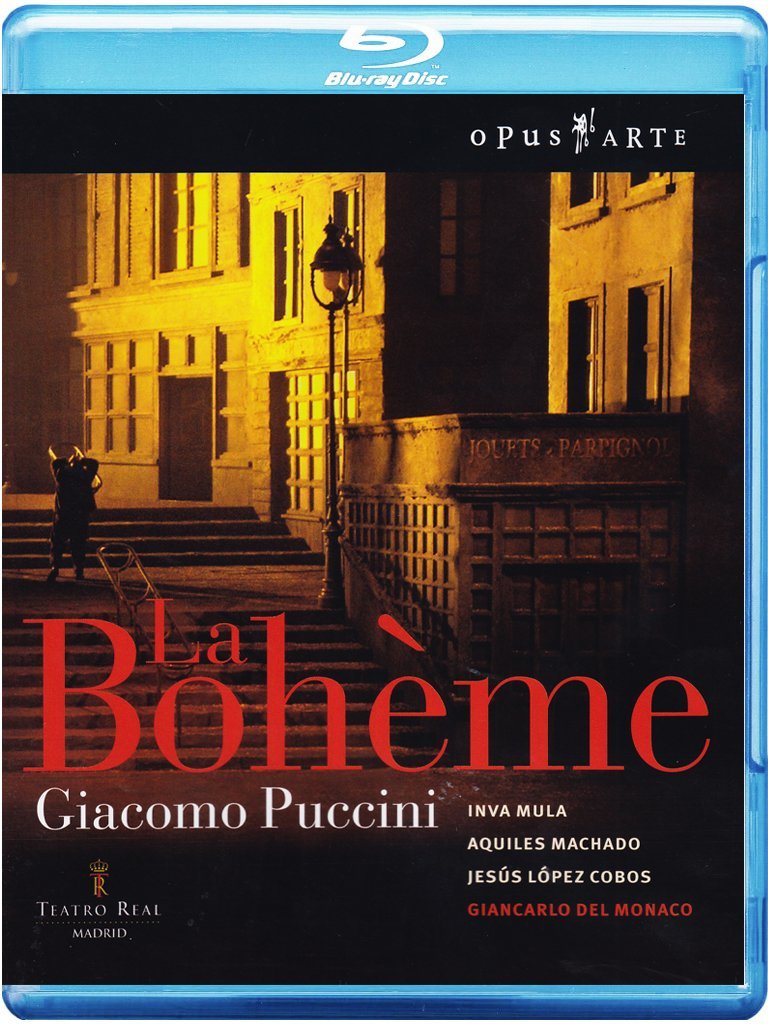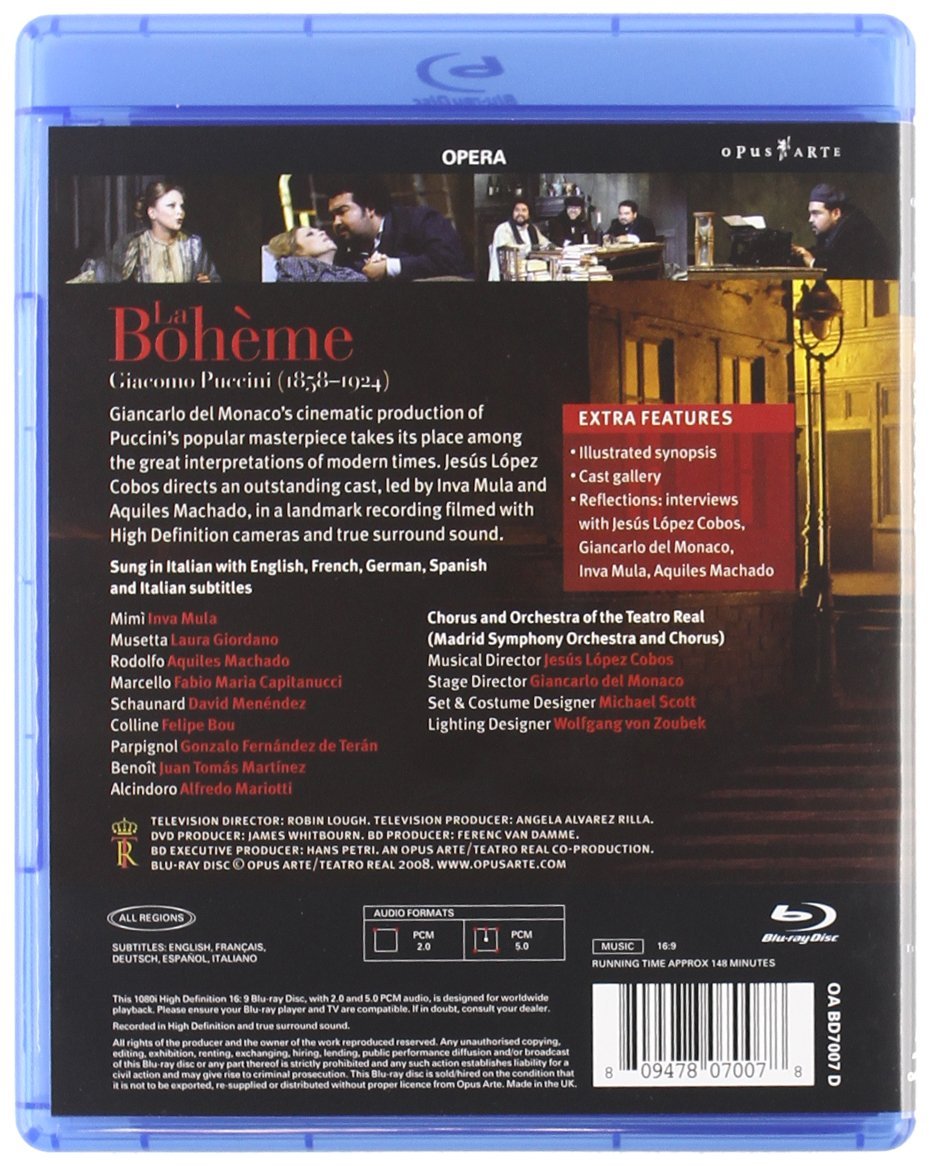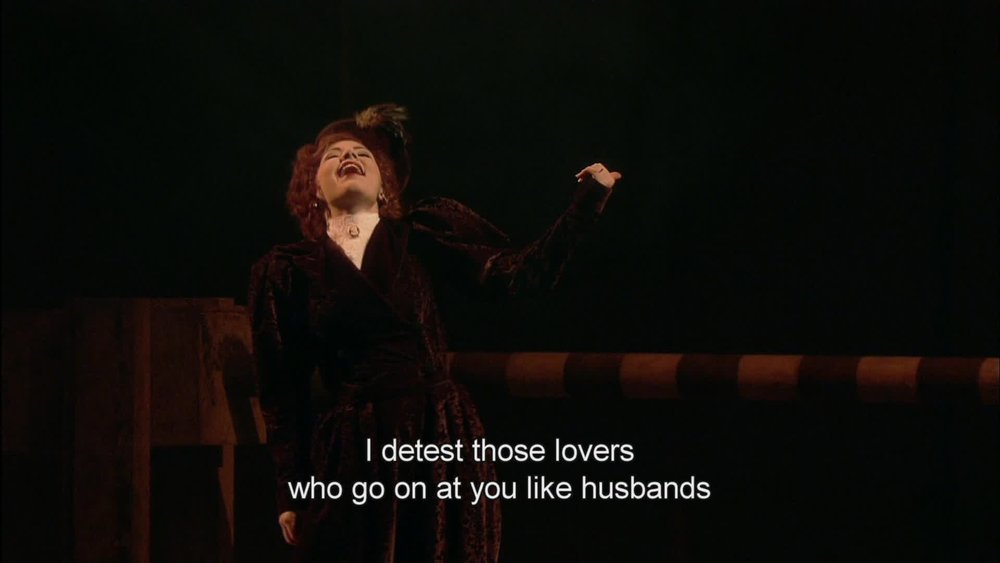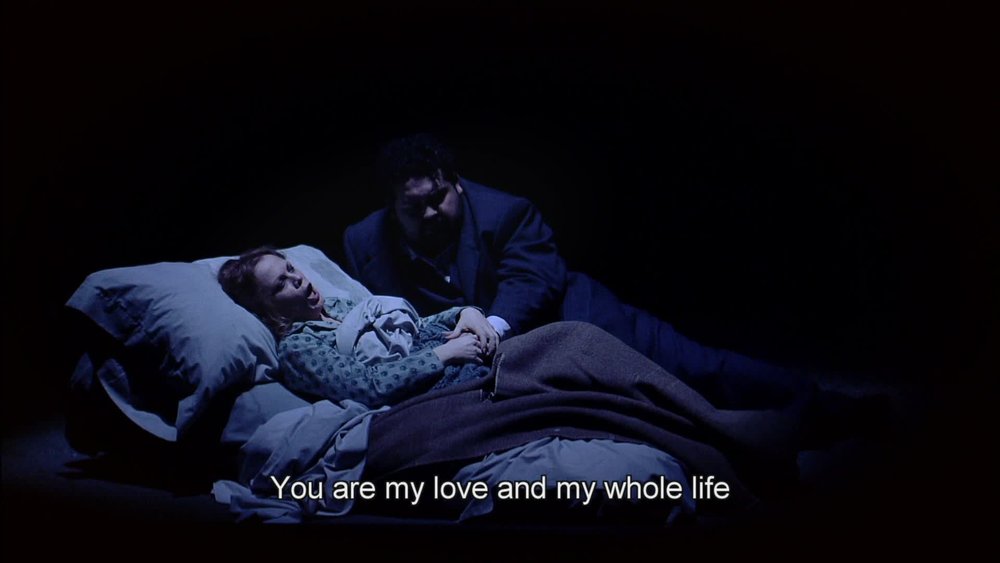

Puccini La Bohème opera to libretto by Giuseppe Giacosa and Luigi Illica. Directed 2006 by Giancarlo del Monaco at the Madrid Teatro Real. Stars Inva Mula (Mimì), Aquiles Machado (Rodolfo), Laura Giordano (Musetta), Fabio Maria Capitanucci (Marcello), David Menéndez (Schaunard), Felipe Bou (Colline), Gonzalo Fernández de Terán (Parpignol), Juan Tomás Martínez (Benoit), Alfredo Mariotti (Alcindoro), Federico Gallar (Customs Seargent), Mario Villoria (Customs Officer), and Francisco Pardo (Street Seller). Jesús López Cobos conducts the Chorus and Orchestra of the Teatro Real (Chorus Master Jordi Casas Bayer) and the Children's Chorus of the Comunidad de Madrid (Chorus Master José de Felipe). Design of set and costumes by Michael Scott; lighting by Wolfgang von Zoubek; directed for TV by Robin Lough. Disc has 5.0 PCM sound. Grade: A
Starving artists share a cold garret in Paris. Spurning work and creature comforts, they, and the women who love them, are called "Bohemians." From left to right, our four Bs are the musician Schaunard (David Menéndez), the painter Marcello (Fabio Maria Capitanucci), the philosopher Colline (Felipe Dou), and the poet Rodolfo (Aquiles Machado). It's Christmas. Schaunard has stumbled into a bit of money and the 4 plan a rare treat, dinner at cafe Momus in The Latin Quarter!
Rodolfo stays behind to quickly finish a poem. But then there's a voice at the door:
She's a co-tenant (Inva Mula) Rodolfo has never seen. She seems ill, and she needs a light for her candle:
It's love at first sight for both, and things happen fast. Below begins a famous passage:
Inva Mula does a impassioned job of acting someone half her age (I think her libretto age is 22). She manages to look simultaneously young, pretty, and sick. Aquiles Machado is border-line obese. This is a problem since there is no such thing as a fat starving artist. But he has a sweet voice and he can act. He makes you care about Rodolfo and this strange girl, who says she is called Mimì:
Mimì is a seamstress and an artist who works embroidering flowers. Rodolfo takes Mimì to the cafe, and his friends are instantly enthralled with her as she talks about the pink bonnet Rodolfo bought for her. We should point out now nobody seems to know what the words "La Bohème" mean as the name of this opera. We used to assume it means "The Bohemians." But why is this not a singular feminine noun in Italian meaning Mimì as the "La Bohème" for whom the opera is named?
Marcello has a woman issue also. He longs for Musetta, his ex-girlfriend. Musetta has a rich patron now, but she's ready to dump him and take up with Marcello again. Watch Musetta make all her best moves in a very public place:
Rodolfo and Marcello leave the garret to be with their lovers. But neither relationship lasts long because neither man can afford what his woman needs. Mimì, who has tuberculosis, needs warmth and security. Musetta needs new pretty clothes. Below we see guilt-ridden Rodolfo explain why he can't easily live with Mimì:
Mimì and Rodolfo agree to split:
But they decide to stay together until spring arrives. To live alone . . . :
But as soon as Marcello starts showing jealousy, Musetta bolts for freedom again:
And so our two forlorn ex-lovers move back into the garret and try to focus on work. Musetta continues her old life. Mimì finds a Count who takes her in as mistress. The men try to forget all this when, suddenly, after many months, Musetta appears:
Mimì, growing ever weaker, was abandoned by the Count. Now she is homeless and can hardly walk. All she can think of is Rodolfo. The men instantly do what little they can to comfort her in their pitifully barren abode:
Night falls. Mimì and Rodolfo reconcile:
While Rodolfo impotently stews about, the others try to help and Musetta turns to prayer:
Schaunard tries to tend to Mimi and discovers that she's dead. After he learns of her death, Rodolfo, aghast in shame for leaving her yet again, staggers out into the night.
All the supporting singers are excellent. The design is impressive and expensive-looking. Del Monaco directs awesome transitions between Act 1 and the street seen at Cafe Momus and between the death chamber and Rodolfo's flight into the streets. Personal direction is movie-slick throughout. We especially like Act Three where the traditional snow banks are replaced by a more detailed street scene showing the futility of Bohemian lives. And it chokes us up in Act IV when Felipe Bou leaves the garret. When he backs out the door (to pawn his overcoat), we know that Doom is moving in.
This is a sad story, and this production has the saddest ending of any we have seen. So this show gets an "A" grade as probably the best La Bohème video ever.
Here's the only decent clip I could find for this:
OR



















